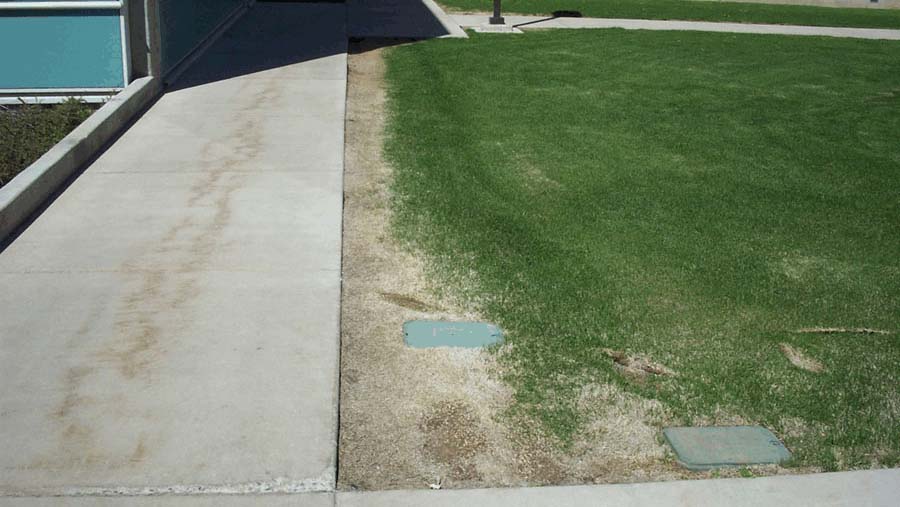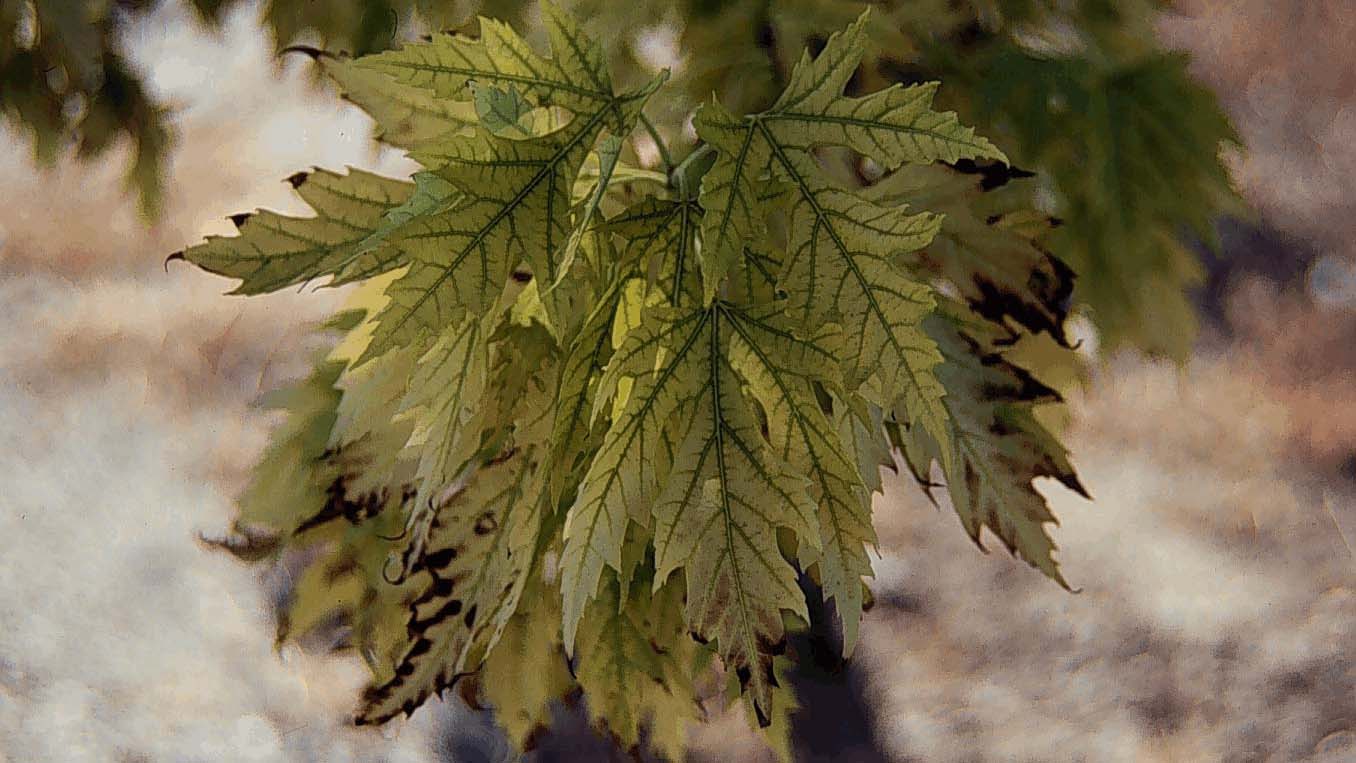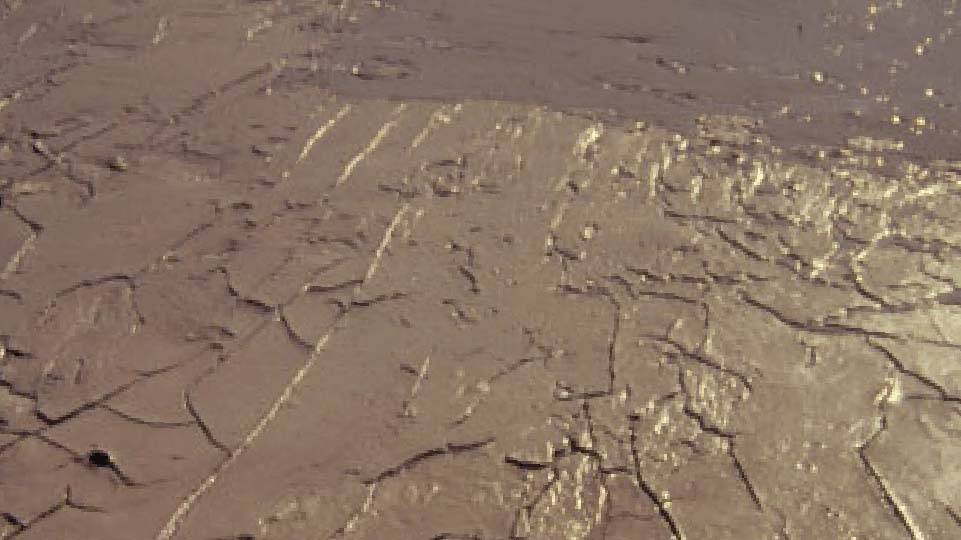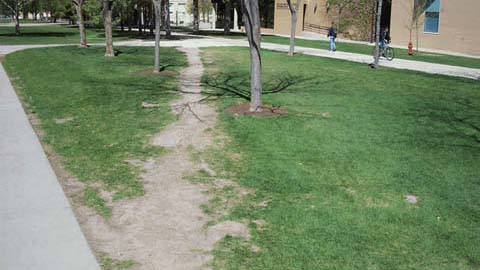Solutions to Soil Problems: IV. Soil Structure (compaction)
Soil structure refers to the combination of primary soil particles – sand, silt and clay – into larger units called aggregates or clods. Aggregates are commonly seen when a soil is tilled or disturbed. Organic matter is the key to creating a well-structured soil. Organic matter acts as a binding agent or the “glue” that holds soil particles together.
Structure is a desirable characteristic in soils, and is essential for good plant growth. Well-structured soils promote root growth, and have good drainage characteristics, high water holding capacities, and good aeration or gas exchange properties.
Compaction and Soil Structure
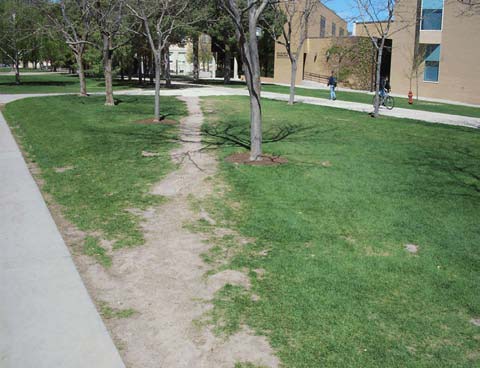
Compaction destroys soil structure and causes significant plant growth problems in Utah landscapes. It is normally caused by repeated foot or vehicle traffic over the same soil area. The traffic may be associated with construction activities, or foot or vehicle traffic in established landscapes. Moist conditions make soils more susceptible to compaction.
Compaction forces soil particles closer together, driving out pore space and reducing the volume of air and water in soil. It also seals off the soil surface and reduces the amount of air and water entering soil. Reduced gas exchange and, in particular, a low oxygen concentration in the root zone is the primary cause of plant decline in compacted soils. Increased physical resistance to rooting is also a major compaction problem.
Identifying Compaction in the Landscape
Sparse growth or barren paths in turf areas are the most common indicators of a soil compaction problem. Water runoff and/or dry spots in turf can also be an indicator. Different growth rates among trees planted at the same time is common in park settings and can often be linked to compaction in the root zone of certain trees.
Soil compaction can also be identified by exploring an area with a soil probe, shovel or long handled screwdriver. It should be easy to push a probe into moist, uncompacted soil. Probe areas that may be compacted as well as normal areas for comparison.
Preventing Compaction

- Restrict traffic in sensitive or compaction-prone areas. Signs and fences generally do not work and look bad. Use landscape design methods to place vegetative (e.g., shrub rows) or hardscape (e.g., curbing, railing) barriers to direct traffic onto sidewalks and off of soil areas.
- Add a sidewalk in areas with recurring compaction trails. An alternative would be to use a surface treatment such as a mulch layer to improve the look of the path.
- Use sandy soils high in organic matter for high traffic areas.
Treating Compaction
- Subsoil or deep rip using agricultural or other heavy implements in heavily compacted areas, especially after construction and before installation of utility and irrigation systems.
- Add organic matter and till shallow compacted areas to induce structure before replanting.
- Aerate using a hollow tine aerator once or twice a year. Consider spreading a thin layer of organic matter after aerating to backfill the holes created during the process.
- Vertical mulch using an augur to bore 2 to 4-inch diameter holes, 2 to 6-feet deep within the drip line of trees. Backfill the holes with wood chips and slow release fertilizer.
- Mulch around the base of woody perennials.
- Restrict traffic on the area and wait for the soil to recover. With wetting-drying and freezingthawing cycles, and the activity of soil organisms, compacted soil will gradually reform aggregates. This process may take a full season or more.
Utah State University Extension
Peer-reviewed fact sheet
Download PDF
Authors
Rich Koenig, Extension Soil Specialist and Teresa Cerny, Extension Ornamental Horticulture Specialist
Related Research


